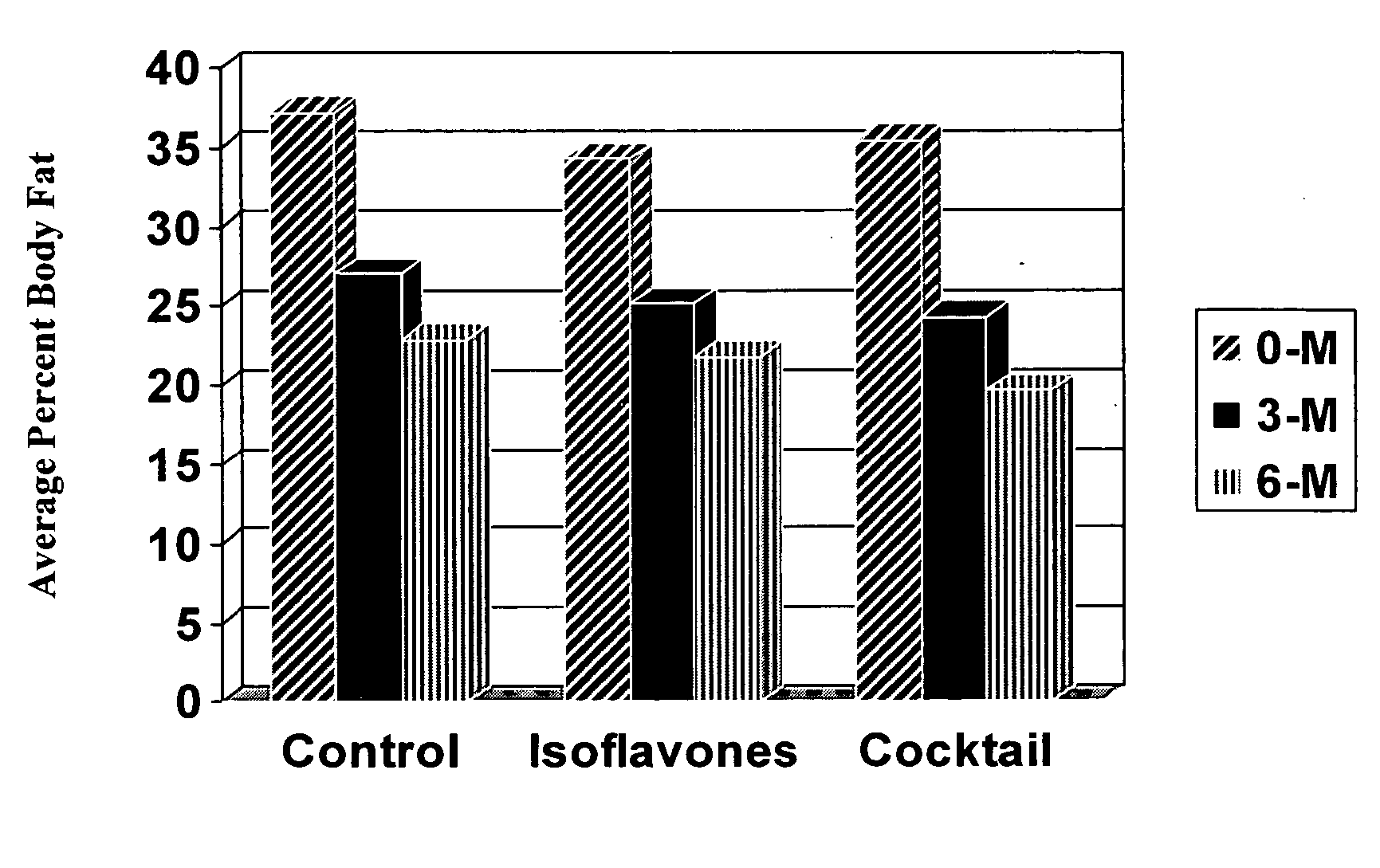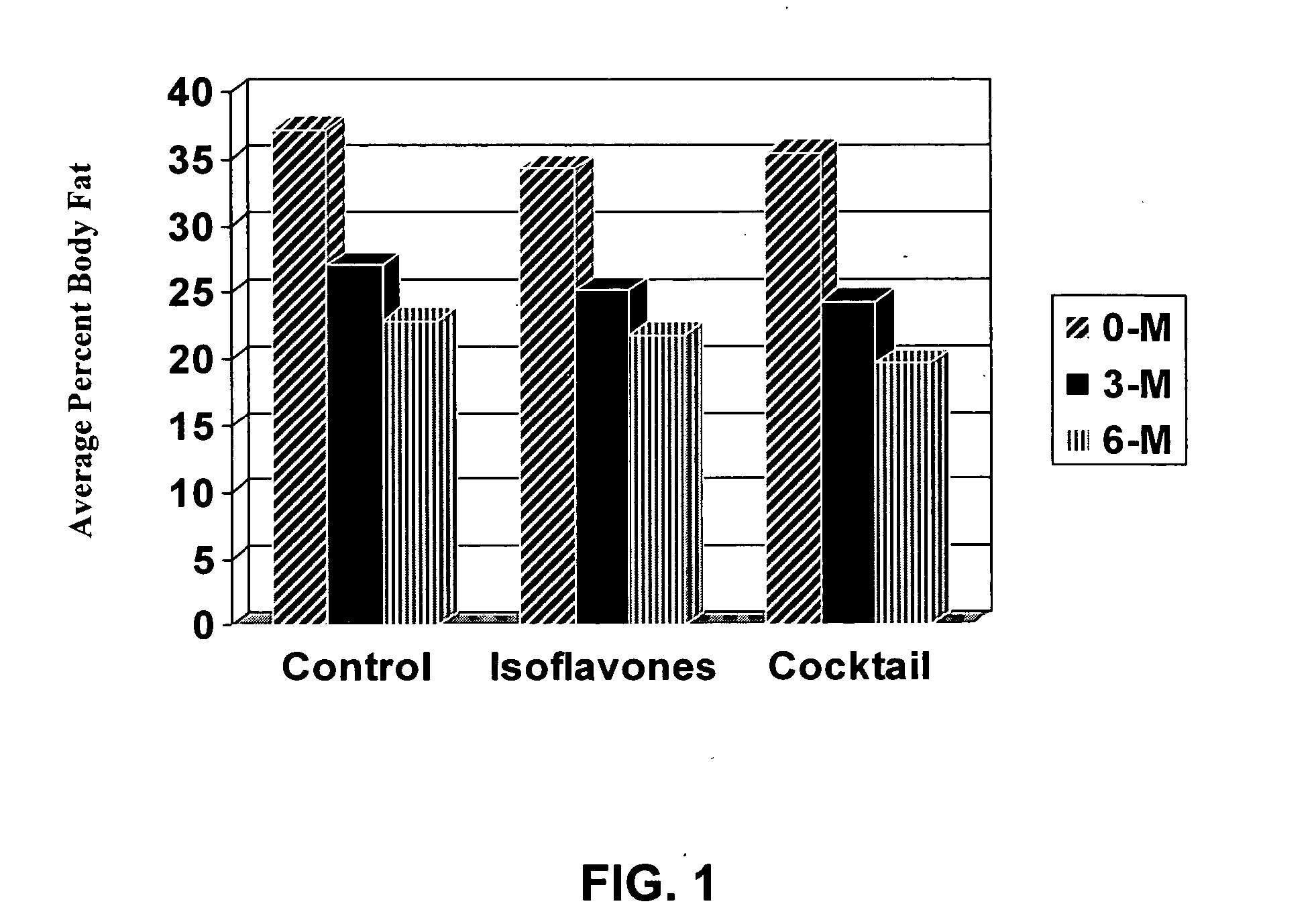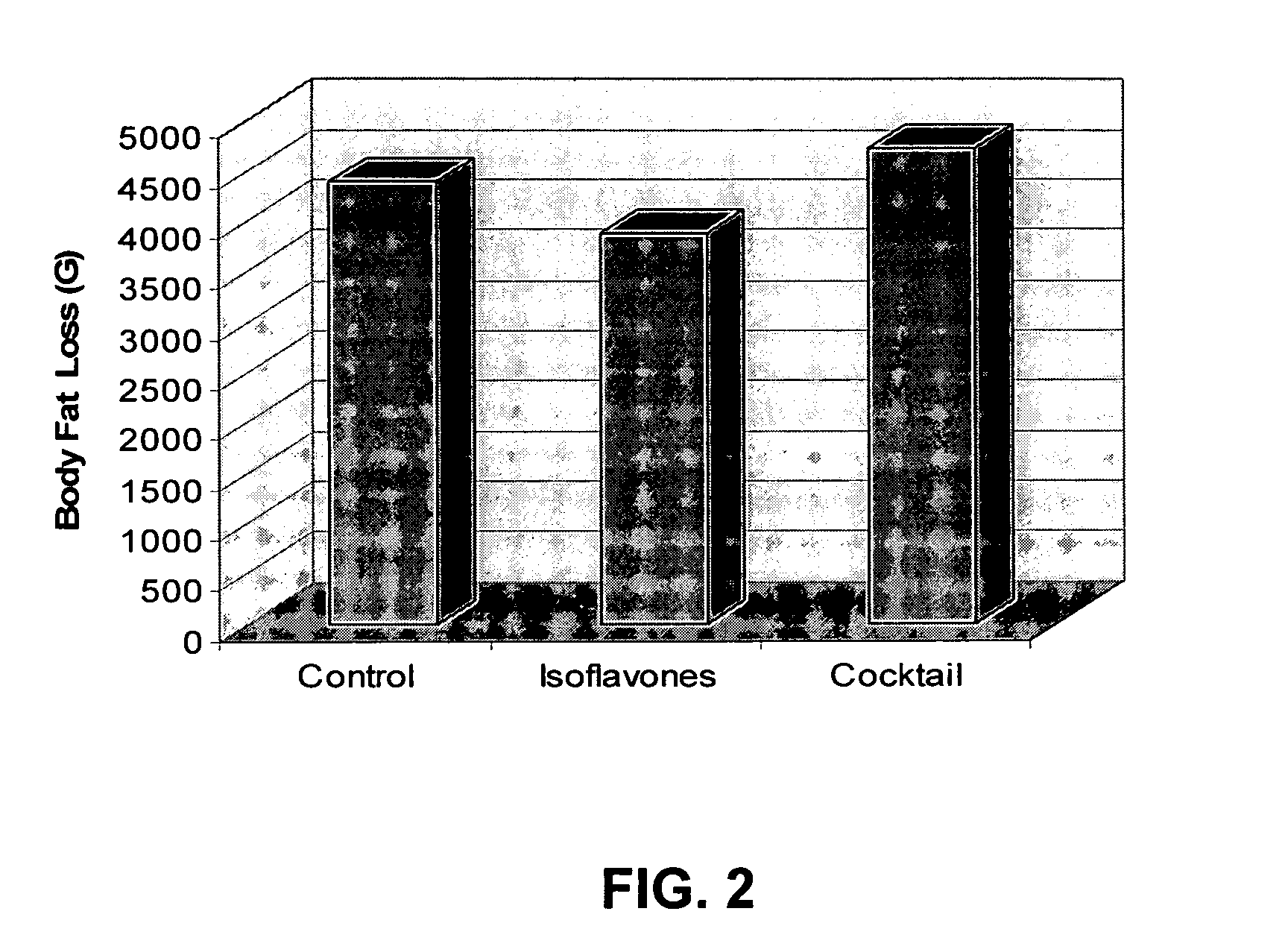Compositions and methods for reducing or preventing obesity
- Summary
- Abstract
- Description
- Claims
- Application Information
AI Technical Summary
Benefits of technology
Problems solved by technology
Method used
Image
Examples
example 1
[0091] Overweight dogs (Male: >22% Body Fat; Female >26% Body Fat) were used. Group 1 (Control diet) consisted of 9 Labrador Retrievers (LRs) and 6 Siberian Huskies (SHs). Group 2 (Isoflavone diet) consisted of 8 LRs and 6 SHs. Group 3 (Cocktail diet) consisted of 7 LRs and 8 SHs.
[0092] Animals fed the Control diet (Group 1) received a traditional low caloric diet: 1400 Kcal / lb, 25% protein, 6% fat, 7% crude fiber. Animals fed the Isoflavone diet (Group 2) were fed the control diet containing 10% Soy Germ Meal (SGM). Animals fed the Cocktail diet (Group 3) were fed the control diet containing 10% SGM, 1.5% conjugated linoleic acid (CLA), and 100 parts per million (ppm) 1-carnitine.
[0093] All dogs were given a pre-study MER determination. All dogs were fed 70% of their maintenance energy requirement (MER) during the first 3 months of weight loss. At 3 months, animals were assayed by Dual Energy X-ray Absorptiometry (DEXA). Dogs that failed to reach the ideal body fat le...
example 2
[0107] Non-obese dogs that were spayed or neutered (Male: <17.5% Body Fat; Female <20% Body Fat, referred to as “normal” dogs) were used in the study. Group 1 (Control diet) consisted of 13 Labrador Retrievers (LRs). Group 2 (Isoflavone diet) consisted of 14 LRs. Group 3 (Cocktail diet) consisted of 15 LRs.
[0108] Animals fed the Control diet (Group 1) received a standard superpremium diet: 1900 Kcal / lb, 30% protein, 17% fat. Animals fed the Isoflavone diet (Group 2) were fed the control diet containing 10% Soy Germ Meal (SGM). Animals fed the Cocktail diet (Group 3) were fed the control diet containing 10% SGM, 1.5% conjugated linoleic acid (CLA), and 100 parts per million (ppm) 1-carnitine.
[0109] The maintenance energy requirement (MER) of all dogs was determined prior to the feeding study. All dogs were fed 125% of their MER during the 12 months of feeding study.
[0110] The following measurements were made for each animal: [0111] Body weight, body condition sco...
PUM
| Property | Measurement | Unit |
|---|---|---|
| Weight | aaaaa | aaaaa |
| Composition | aaaaa | aaaaa |
| Mass | aaaaa | aaaaa |
Abstract
Description
Claims
Application Information
 Login to View More
Login to View More - R&D
- Intellectual Property
- Life Sciences
- Materials
- Tech Scout
- Unparalleled Data Quality
- Higher Quality Content
- 60% Fewer Hallucinations
Browse by: Latest US Patents, China's latest patents, Technical Efficacy Thesaurus, Application Domain, Technology Topic, Popular Technical Reports.
© 2025 PatSnap. All rights reserved.Legal|Privacy policy|Modern Slavery Act Transparency Statement|Sitemap|About US| Contact US: help@patsnap.com



